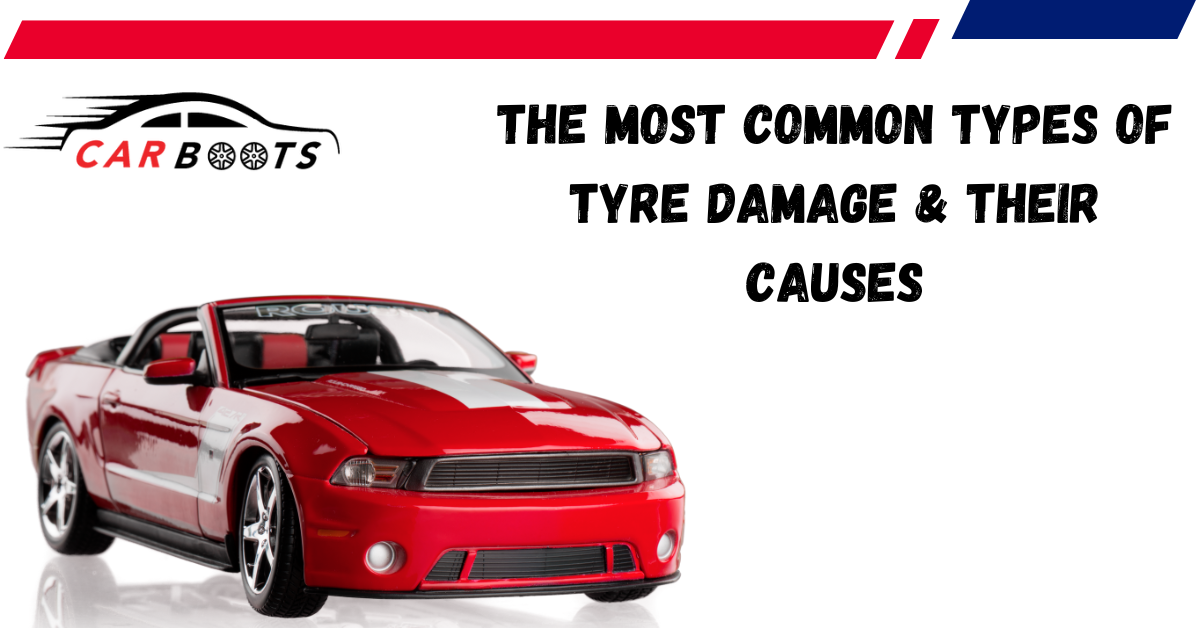The Most Common Types of Tyre Damage & Their Causes
The Most Common Types of Tyre Damage & Their Causes
Tyre damage is an all too common occurrence for drivers. Not only can it be dangerous, but it can also lead to costly repairs and replacements. Knowing the different types of tyre damage and their causes can help you take preventative measures and save you money in the long run. In this article, we’ll discuss the most common types of tyre damage and their causes.
Tyres are an essential part of a vehicle, responsible for maintaining contact between the road and the vehicle. Tyres can experience various types of damage, which can lead to significant issues such as a flat tyre, blowouts, and even accidents. Understanding the most common types of tyre damage and their causes can help you take the necessary steps to prevent and treat such damage, saving you time and money in the long run.
Punctures
Punctures are perhaps the most common type of tyre damage that drivers experience. A puncture occurs when a foreign object, such as a nail, enters the tyre and causes a hole or leak.
Causes of Punctures
Punctures can be caused by various objects on the road, including nails, screws, glass, and rocks. In some cases, punctures can also be caused by wear and tear, such as ageing or cracks in the tyre.
Prevention and Treatment of Punctures
To prevent punctures, ensure that your tyres are properly inflated and check them regularly for wear and tear. Avoid driving over debris or rough terrain, and steer clear of potholes. If you experience a puncture, it’s important to stop the vehicle immediately and check the tyre for damage. In some cases, punctures can be repaired, but if the damage is too severe, the tyre may need to be replaced.
Cuts and Tears
Cuts and tears are another common type of tyre damage. These occur when the tyre’s surface is cut or torn, which can be caused by sharp objects or rough terrain.
Causes of Cuts and Tears
Cuts and tears can be caused by debris on the road, such as glass or metal, or by driving over rough terrain. Tyres that are worn or aged are also more susceptible to cuts and tears.
Prevention and Treatment of Cuts and Tears
To prevent cuts and tears, avoid driving over debris or rough terrain whenever possible. Regularly inspect your tyres for any signs of wear and tear, and ensure that they are properly inflated. If you experience a cut or tear in your tyre, it’s important to have it inspected by a professional. Depending on the severity of the damage, the tyre may need to be repaired or replaced.
Sidewall Damage
Sidewall damage occurs when the tyre’s sidewall is damaged or compromised. The sidewall is the area of the tyre between the tread and the rim, and it’s responsible for supporting the weight of the vehicle.
Causes of Sidewall Damage
Sidewall damage can be caused by a variety of factors, including impact with curbs or other obstacles, driving over debris, and aging or wear and tear.
Prevention and Treatment of Sidewall Damage
To prevent sidewall damage, avoid driving over debris and obstacles and take care when parking near curbs or other obstructions. Inspect your tyres regularly for signs of wear and tear, and replace them when they become worn or aged. If you notice any damage to your tyre’s sidewall, it’s important to have it inspected by a professional. In some cases, the damage may be repairable, but in others, the tyre may need to be replaced.
Bulges and Blisters
Bulges and blisters are another common type of tyre damage. These occur when the internal structure of the tyre is compromised, causing the tyre to bulge or blister.
Causes of Bulges and Blisters
Bulges and blisters can be caused by a variety of factors, including impact with potholes or curbs, overloading of the vehicle, and manufacturing defects.
Prevention and Treatment of Bulges and Blisters
To prevent bulges and blisters, avoid overloading your vehicle and take care when driving over rough terrain. Inspect your tyres regularly for signs of wear and tear, and replace them when they become worn or aged. If you notice a bulge or blister on your tyre, it’s important to have it inspected by a professional. In most cases, the tyre will need to be replaced.
Uneven Wear
Uneven wear is a common issue that can occur when a tyre is not rotated regularly or when the vehicle is not properly aligned.
Causes of Uneven Wear
Uneven wear can be caused by a variety of factors, including lack of rotation, improper alignment, and driving on uneven surfaces.
Prevention and Treatment of Uneven Wear
To prevent uneven wear, ensure that your tyres are rotated regularly and that your vehicle is properly aligned. Avoid driving on rough or uneven surfaces whenever possible. If you notice any signs of uneven wear on your tyres, it’s important to have them inspected by a professional. Depending on the severity of the wear, the tyres may need to be replaced.
Conclusion
Tyre damage can be a frustrating and costly experience for drivers. By understanding the most common types of tyre damage and their causes, you can take preventative measures to avoid such damage and save money in the long run. Regular inspections and maintenance can go a long way in ensuring the longevity and safety of your tyres.
FAQ
Can a punctured tyre be repaired?
Yes, in most cases, a punctured tyre can be repaired. However, it depends on the size and location of the puncture. If the puncture is on the sidewall or in the shoulder area of the tyre, it cannot be repaired. It’s always best to have a professional inspect the puncture to determine if it can be repaired or if the tyre needs to be replaced.
What is the best way to prevent tyre damage?
The best way to prevent tyre damage is to practice good driving habits and regular maintenance. This includes avoiding rough roads and obstacles, maintaining proper inflation levels, rotating your tyres regularly, and inspecting your tyres for signs of wear and damage.
How often should I rotate my tyres?
Tyres should be rotated every 6,000 to 8,000 miles or as recommended by your vehicle manufacturer. Rotating your tyres regularly helps ensure even wear and prolongs the life of your tyres.
What should I do if I notice uneven wear on my tyres?
If you notice uneven wear on your tyres, it’s important to have them inspected by a professional. Depending on the severity of the wear, the tyres may need to be replaced or rotated to ensure even wear.
Can I drive on a tyre with sidewall damage?
No, it’s not recommended to drive on a tyre with sidewall damage. The sidewall is an essential part of the tyre’s structure, and any damage to it can compromise the tyre’s integrity, leading to a blowout or other dangerous situations on the road.
In conclusion, understanding the most common types of tyre damage and their causes is crucial for maintaining the safety and longevity of your tyres. Regular inspections, maintenance, and good driving habits can help prevent tyre damage and save you money in the long run. If you notice any signs of tyre damage, it’s important to have them inspected by a professional to determine the best course of action, whether that be repair or replacement. By taking these preventative measures, you can keep your vehicle running smoothly and safely on the road.








